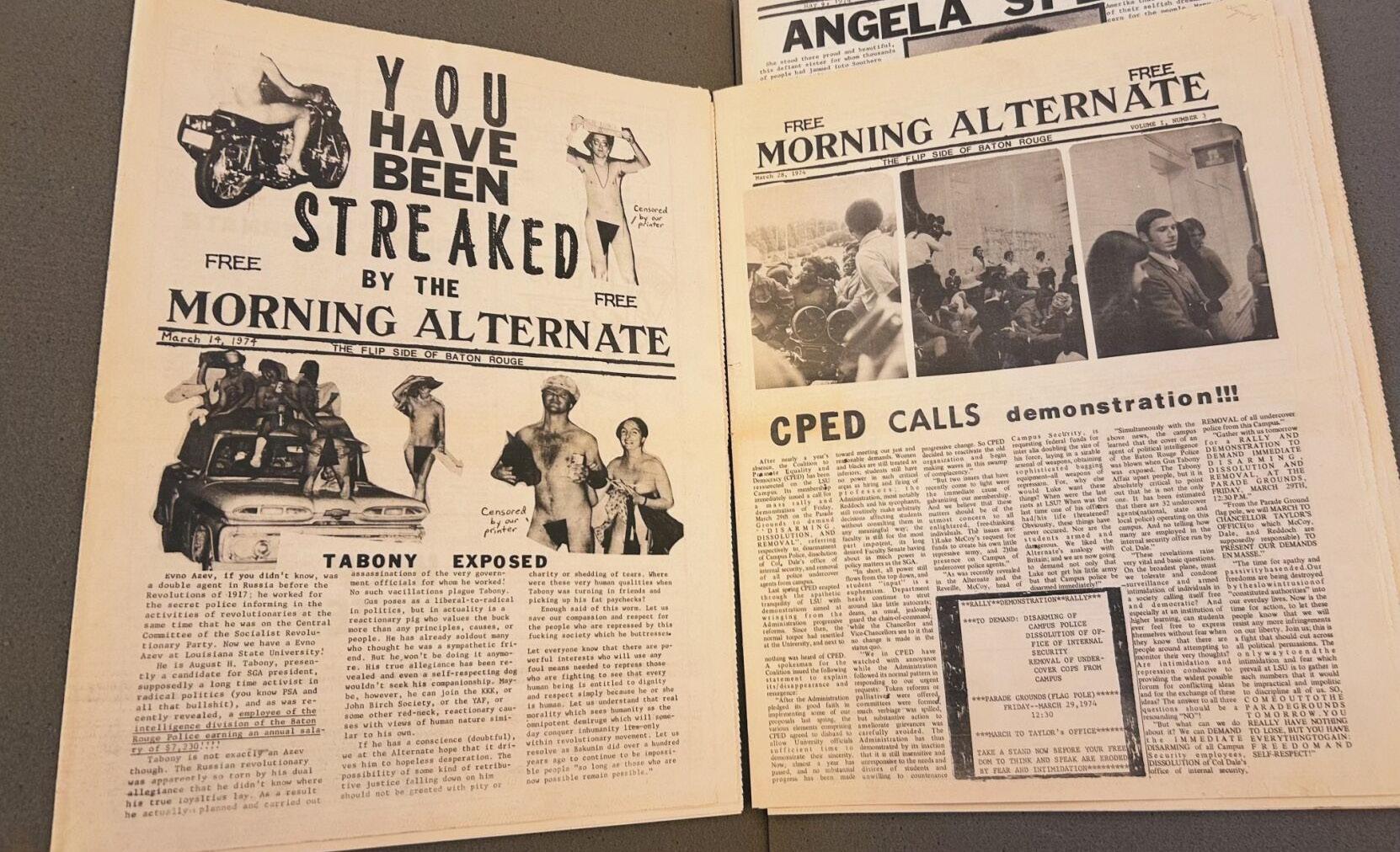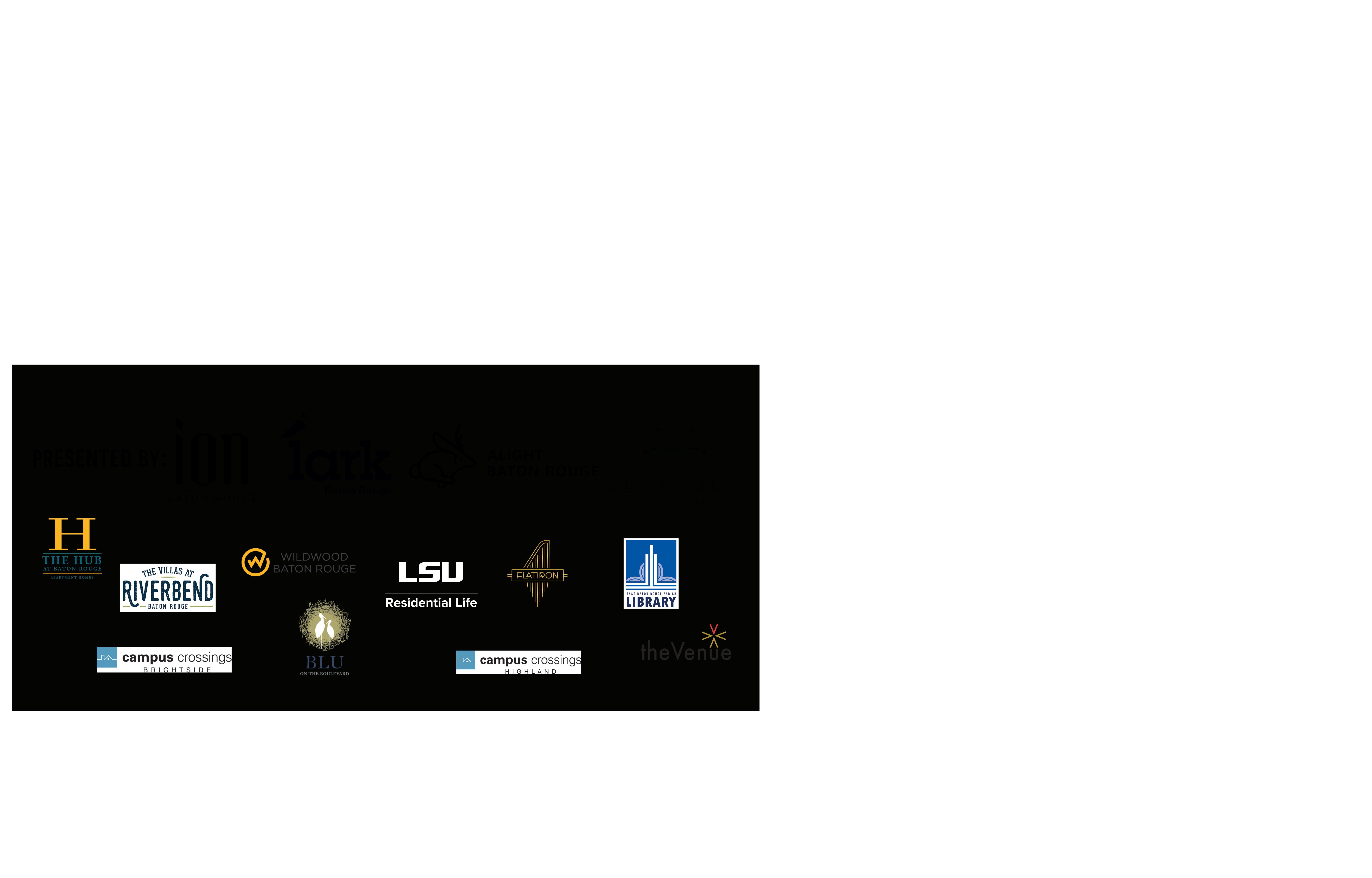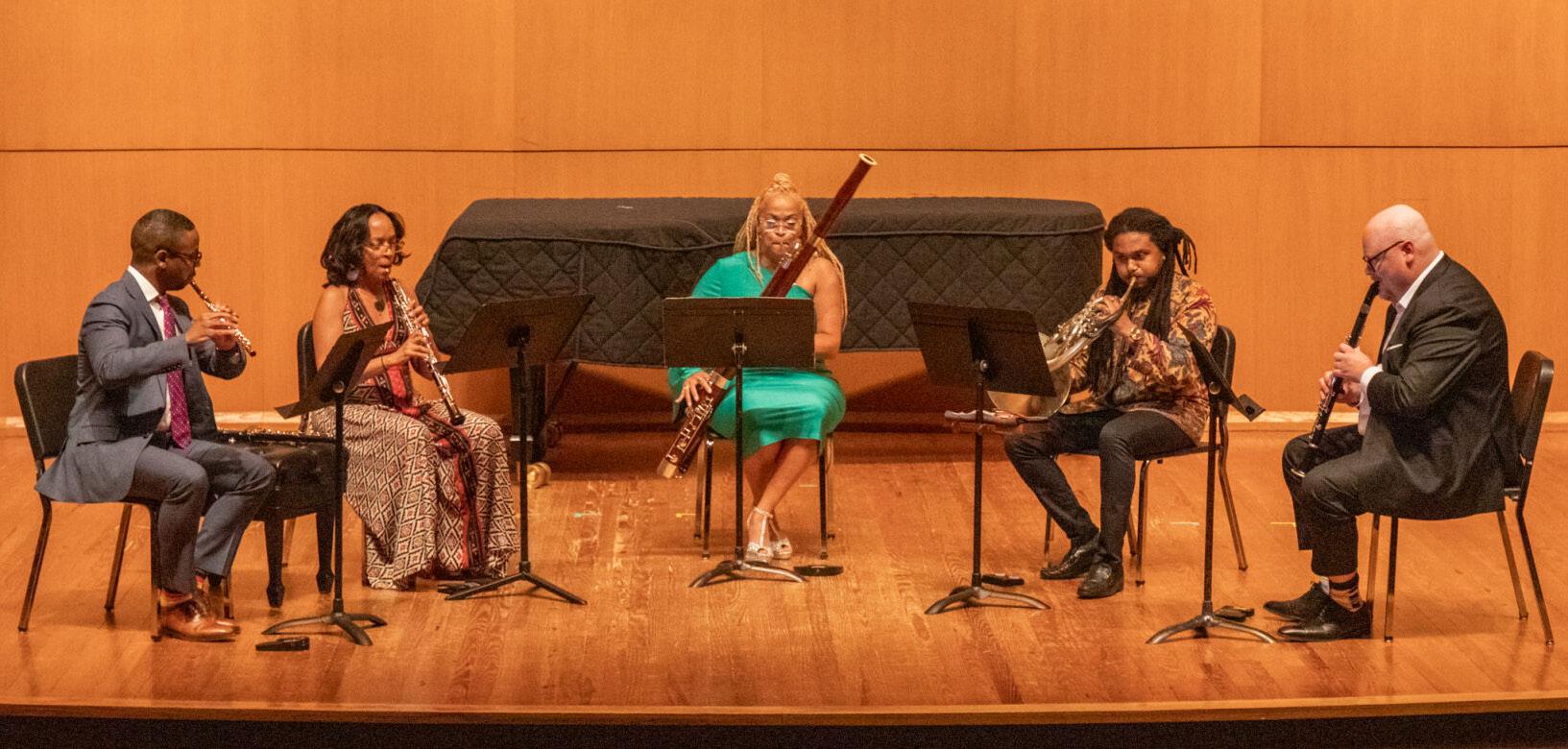

LSU recruits Olympic goldmedal gymnast.




LSU recruits Olympic goldmedal gymnast.

Projected budget deficit threatens Louisiana’s universities.
Grammy award-winning quintet plays at School of Music.


Gov. Jeff Landry tells LSU community to ‘calm down’ and let Mike the Tiger back in Tiger Stadium.





BY JOHN BUZBEE @thebuzzbuz
Louisiana’s public university systems and officials have been told to brace for a possible $250 million budget deficit ahead of next year’s fiscal forecast, largely because of the expiration of a state sales tax.
The news came last week in the annual Board of Regents budget hearing where board members and higher education officials stressed that such a budgetary shortfall could lead to layoffs, a decline in enrollment, the shutting of some campuses and a significant loss of funds toward student financial aid.
“It’s not just an exercise, this could be a reality. We asked every system to be in store for $250 million cuts,” said Regent and Finance Committee Chair Blake David at the hearing on Sept. 24.
The projected quarter-billion deficit in higher education would only be one slice to a larger $700 million statewide deficit which Gov. Jeff Landry said at a Tuesday news conference could balloon up to $1.5 billion.
The sales tax, which was passed as a temporary solution to a budget crisis years ago, is set to expire in July 2025. It ticks up the state sales tax by an across-theboard 0.45% and brings in hundreds of millions annually. Louisiana has the highest sales tax in the country.
Landry said at the Tuesday news conference that he’d call in the legislature for a special session in November with the goal of fixing a “failing tax system” at the Tuesday conference.
“We’ve seen this dance before,” Landry said. “Every time there’s a budget shortfall, because of constitutional obstructions, this legislature’s only two places that they can cut are only higher education and healthcare. And if we do not address this problem now, chances are it will get worse. If we fail to implement tax reform, every step we take forward in progress will end up two steps back.”
Landry’s plan also includes lowering corporate tax rates but makes up for that lost revenue with changes to business exemptions. Landry said the plan is to “lower tax rates and expand the base.”
Landry said at the Tuesday news conference that there’s a goal of reducing, if not completely eliminating the state income tax by 2030.
Secretary of Revenue Richard Nelson said the deficit created by reducing the state income tax would be made up by applying a sales tax to items that are currently exempt. He listed examples, which he said were luxuries such as dog grooming and lobbying.
State Commissioner of Education Kim Hunter Reed told the

Reveille that higher education lacking these funds poses a significant impact on students but emphasized that higher education funds have yet to be cut – a worst case scenario that’s not yet out of the question.
“This is not how you build an excellent Louisiana,” Reed said. “You’re not going to cut your way to excellence.”
Higher education and health care are unprotected areas of the Louisiana budget, which is why this worry has materialized.
Reed said all four university systems in Louisiana report to the Board of Regents, a state agency that oversees all public higher education systems, an increase in enrollment. Broadly, she said, they feared a significant reduction in funds could hamper the growth and development of these students, who are the future of Louisiana’s workforce.
Reed said at the Regents budget hearing that higher education should not be underrated for the way it positively affects Louisiana’s community; she said it has created better taxpayers.
“We’re not just a financial responsibility of the state to support. We’re a financial contributor to the state,” she said.
State Commissioner of Administration Taylor Barras said he has to present the executive budget, the overall budget that funds the state’s entire operations, to the state legislature one way or another come February.
Barras said this shouldn’t necessarily be coming as a shock. He said the sales tax is “the second largest bucket of revenue we have.”
“There’ll be some tough decisions, no doubt,” Barras said.
He spoke of hopes that discussions were amicable. Perhaps the testimonies of higher education institutions would speak to lawmakers that working through these cuts isn’t easy and there’s a lot at stake.
How LSU is affected
Labbé said in a statement that LSU officials are in talks with the Board of Regents, the state legislature, governor’s office and the Division of Administration regarding the anticipated $250 million budgetary shortfall for next fiscal year.
The bulk of the university’s funding comes from student tuition, around 80%, Labbe said. The remaining 20% is from the state. He said the university is exploring alternative revenue streams, like online programs, to supplement any possible budgetary shortfalls.
“We are identifying areas where we can reduce redundancies and gain efficiencies without impacting faculty and staff positions,” Labbé said.
LSU officials are playing out several scenarios, Labbé said.
“Disinvestment at this time will significantly hurt our research efforts which impacts our ability to attract researchers and students,” LSU President William F. Tate IV told the Regents at the budget hearing. “It would hinder our ability to attract other investments. It would limit our capacity for delivering time and services to students”
He said that LSU currently generates the state a $6.1 billion return on investment and he didn’t like the idea of risking that number decreasing, but that higher education budget cuts would likely tip the scale.
LSU wouldn’t place as high as it currently does on national rankings, Tate said, without the state’s funding.
How LOSFA is affected
The Louisiana Office of Student Financial Aid told the Board of Regents that it could expect to lose lots of its funding, potentially reducing scholarship amounts by around 20%. This amounts to over $50 million in lost scholarship funds, charts at the budget hearing show. LOSFA includes programs like TOPS, Go Grant, Patriot Scholarship, Go Youth Challenge and the Regional Con-
tract.
“Who’s it going to affect?” said Sujuan Boutte, the executive director of LOSFA. “The National Guard is not going to be happy because Patriot [Scholarship] is a big recruiting tool for them. Schools are going to have less financial aid to offer students who are already overburdened and students will have less financial aid available.”
Boutte said LOSFA already operates with minimal administrative oversight, in an effort to maximize funds it can award, meaning that cuts would have wide-reaching effects to the office’s staff and its ability to outreach.
What the other university systems said
Across the board, higher education officials urged that higher education was an investment to the state. Money input to those systems output a greater return on investment to the state, both in terms of productivity and tax dollars.
“There’s no place to cut that won’t hurt,” said Southern University President Dennis Shields at the Regents budget hearing. “It seems to me, it’s a manufactured crisis. It’s simply the state making choices to spend its money somewhere else.”
For Southern, faculty and staff would no doubt have to be laid off, Shields said. Around 60% of Southern’s budget goes toward its people, he added. There’s no place to eliminate excess spending toward travel or supply.
In some projects, like Southern’s infrastructure, state funds have been pivotal in building the momentum for the university to qualify for federal grants, Shields said. That’s going to be a lot harder without the state funds, he said.
He said that without the backing of programs like TOPS, Southern – a Historically Black University – will
(225) 578-6090
Layout/Ad
Paris Ally is a student employee who has worked on the Tailored Tiger program in the Olinde Career Center to provide business attire to students who need it, and program is new this year. The program came about after Student Government approached the Olinde Career Center with the idea, and the closet carries clothing of all sizes. Ally’s title, the age and inception of the Tailored Tiger program were incorrect in a story published on August 26, 2024 about the program’s launch.
CORRECTIONS & CLARIFICATIONS ABOUT THE REVEILLE
The Reveille is written, edited and produced solely by students of Louisiana State University. The Reveille is an independent entity of the Office of Student Media within the Manship School of Mass Communication. A single issue of The Reveille is free from multiple sites on campus and about 25 sites off campus. To obtain additional copies, please visit the Office of Student Media in B-39 Hodges Hall or email studentmedia@ lsu.edu. The Reveille is published biweekly during the fall, spring and summer semesters, except during holidays and final exams. The Reveille is funded through LSU students’ payments of the Student Media fee.
BY JOHN BUZBEE @thebuzzbuz
A newly effective law allows for administrators of Louisiana public universities to adjust the cost of tuition and fees for specific degree paths, especially as it relates to higher-cost programs.
The Board of Regents, an agency that coordinates all of Louisiana’s public higher education institutions, gave the new law, called Act 790, its blessing at a meeting on Wednesday Sept. 25 meeting and provided some recommendations for what those types of courses could include.
The act went into effect on Aug. 1. It applies to all professional degrees, undergraduate and graduate. High cost majors include things like engineering, veterinary sciences and some arts programs.
LSU is moving toward these variably priced majors, university spokesperson Zache Labbe confirmed.
He said that it’s a first for LSU and that an exact timeline hasn’t been worked out.
“These are programs where you have smaller class sizes, expensive laboratories and faculty salaries that are higher cost,” said Commissioner of Education Kim Hunter Reed.
She noted that these recommendations from the Regents don’t directly translate to action; at the end of the day it’s up to management boards and university administrators to set these costs and make these determinations.
The law limits to what degree these raises can be made and requires adequate notice to students regarding tuition and fee amount. Previously, higher education institutions had to seek legislative approval.
These changes come amid worries from Louisiana’s public colleges, as they were advised to brace for a potential deficit of $250 million for the statewide higher education budget created by the expiration of a sales tax.
Gov. Jeff Landry has announced that he’ll host a special legislative session wherein lawmakers will discuss how to resolve these tax issues.
In the meantime, university officials were told to prepare for the “worst case scenario,” Reed said.
“... officials were told to prepare for the ‘worst case scenario.’”
KIM HUNTER
REED Commissioner of Education

on signing an executive order about free speech for higher education institutions on Oct. 1 outside of the LSU Memorial Tower.
BY ASHLYNNN BAILLIO @ashlynnbaillio
On Tuesday, Gov. Jeff Landry signed an executive order directing the Board of Regents to strengthen the protection of free speech on public university campuses.
The order was signed at a press conference held at Memorial Tower in conjunction with LSU’s chapter of Turning Point USA.
“For years, I have met students from across our state who have expressed concern about the direction of free speech on our college campuses. Students
STUDENT LIFE
should never have to fear retribution from their teachers or classmates because they do not agree on speech or politics. Today’s executive order is a step in the right direction to cultivate a culture on our campuses where open dialogue between all viewpoints is prevalent and protected,” Landry said.
The order encourages the Board of Regents to develop and adopt policies further protecting the rights of free speech.
The Board of Regents will also have to submit an annual report outlining any incidents that occurred on campus that hindered free expression.
The LSU chapter of Turning Point USA expressed their support for the executive order.
“For far too long, college faculty and our peers have cultivated an atmosphere and an environment that promotes one ideology and one set of values as the only acceptable values,” Ethan Vogin, vice president of the LSU Turning Point USA chapter, said at the news conference.
The executive order also highlights concerns regarding campus reporting systems, which allow students to report conduct they interpret as
LSU announced plans to introduce Workday as its official student information system, with student-centered functionalities expected to live in Spring 2025, according to a university statement.
The transition will impact students, faculty and staff, as it aims to modernize and streamline various administrative processes across the university. LSU A&M, LSU of Alexandria, LSU Eunice and LSU Shreveport are collaborating on the project.
According to the statement, faculty will be able to access course rosters, email students and submit grades. However, they can continue using Moodle for these tasks if preferred.
The university has also launched a Workday Student website. A project timeline and general updates can be found on it.
For students, the system will provide tools for class registration, degree progress tracking, financial information access and transcript requests, offering a more comprehensive platform for academic management, the statement said.
Staff in academic departments and student-facing offices should experience a more centralized workflow and better access to real-time data, which the university hopes will enhance daily operations.
‘These lines are terrible’: Students frustrated with wait times at the Himes Testing Center
BY CADE SAVOY @c_savoy2504
wLast October, Testing and Evaluation Services celebrated Halloween by decorating the LSU Testing Center at Himes Hall to look like a cemetery, complete with inflatable gravestones inscribed with foreboding messages like “R.I.P. my GPA” and an eightfoot-tall grim reaper decked out in LSU merchandise.
As Tiger TV reported last year, the LSU Testing Center evokes fear in the minds of LSU students. It makes them anxious, unable to focus and less confident in their exam preparation.
But as exam season approaches, LSU students have a new qualm with the Testing Center: long lines.
“I was scheduled to take an exam in Himes Hall this past
Thursday,” philosophy sophomore
Hayden Braziel said. “The line was backed up to the Quad! I had to wait fifteen minutes just to get in the door. I’ve never seen this many people at Himes before. I was just shocked.”
Braziel isn’t alone. The last week has marked one of the busiest weeks in LSU Testing Center history.
According to David O’Brien, the director of the LSU Testing Center, the Center has tested over 20,000 students in the last eight days alone, amounting to about 2,500 students per day.
This massive influx of students taking exams has both inundated the Testing Center and made testing more stressful for students.
“When I got in line to take my exam, I felt confident that I was going to do well on my test,” Bra-
ziel said. “I knew I had studied more than enough, and I wasn’t nervous. But after waiting in line for so long and seeing so many other students cram for their exams, I started to panic. I felt like I couldn’t focus.”
When asked why the Testing Center has been experiencing such long lines, O’Brien cited several factors, including record-breaking student enrollment numbers and the fact that many classes schedule their exams at this time in the semester. But the primary cause of the Center’s long lines, in O’Brien’s view, is what he dubbed a basic rule of human psychology: people like to get in lines.
“People getting ready for their exams get to Himes 30 minutes before their scheduled exam time. Then they see a bunch of people lined up outside and think, ‘Oh!
I really need to get in line.’ And the cycle continues,” O’Brien explained. “Students get nervous that they’re going to miss their exams, so they get in line. And next thing you know we have a line backed up to the Quad.”
While he recognized that the long lines at Himes have been frustrating to many LSU students, O’Brien insisted that Testing and Evaluation Services is doing everything it can to streamline test taking.
“Our policies haven’t changed, and they do work,” O’Brien said. “We check one person in every 12 seconds and 130 people every 30 minutes. This is amazingly fast.”
As it stands, the Testing Center has announced no intention to expand its facilities or to change
BY SARAH WALTON @sarahrosewalton
On Sept. 27, LSU’s Hill Memorial Library held an event called “Vintage Voices: About A Century of Shenanigans in the LSU Student Press.” The exhibit shined a light into the past, revealing a long history of projects and ideas from the minds of LSU Student Media.
The Giggler, published between 1913 and 1916, was one of these projects. Created by LSU’s all-female Scribbler’s Club, the magazine was filled with satire and jokes, with stories focused on the experience of women on campus.
The Purple Pel was another humorous magazine filled with cartoons, thoughts and jokes. Created by the Sigma Delta Chi journalism society and Theta Sigma Sigma, the magazine lasted from 1924 to 1926.
One of the jokes in the magazine labeled “A Bogy Doctor’s Certificate” read:
A slightly more academic publication that came straight at the behest of Student Government was the “LSU Poop Book: Course and Professor Evaluation.” Published in the ‘60s, it served as a sort of predecessor to RateMyProfessor, telling students what classes were worth taking and which were not.
The ‘70s were a tumultuous time in American history, and it’s easily reflected by the student publications that once circulated LSU. One such publication was the Morning Alternate, a liberal newspaper that focused on issues ranging from civil rights to the oil industry. In May of 1974, they covered Angela Davis’ appearance at Southern University.
But if there’s one thing the Morning Alternate would be remembered for, it would be streaking. In March of 1974, LSU students’ streaking shenanigans made it onto the front page, complete with “YOU HAVE BEEN STREAKED” in large text. Next to the words, photos of streakers were placed with black squares

Mrs. Herget gave me a furlough to go to New Orleans and get my feet treated.



No, I went to a dance.”
covering their private areas, accompanied by handwriting reading “censored by our printer.”
The Reveille was also featured in the exhibit, each page serving as a time capsule. Pages documented cartoons, and a time when shirts cost a dollar and Fantastic Four advertisements sat bold on the page.
In fact, it was the advertisements that offered a surprising glimpse into what life was like around campus at the time. The Varsity Theatre was a primarily R-rated theater, and the Reveille would run advertisements for showings about “Naughty Co-Eds” and “Campus Pussycats.”
The ‘80s saw the introduction of The Wonderland Times, a biweekly magazine that lasted only a year and a half. The magazine had a lot to say, publishing poems, cartoons, letters and more. Although sometimes, their content could take an interesting turn. Two of the sections from October of 1989 were labeled “Cannabis Corner” and “Good Sex.”
Another interesting publication was ‘The Campus Dirt,’ a five


BY ALAYNA FORD @alayna_fordd
At LSU, there is a hidden culture that pays homage in the Music and Dramatic Arts Building every Monday from 7:30 –9:30 p.m. That group is the LSU Dance Ambassadors.
A group of dancers revived the club in 2019 after it sat dormant for over 12 years. Sarah Guarisco, LSU alumna and former Dance Ambassador president, reestablished the group. Guarisco wanted to create a safe space for dancers looking to explore a variety of dance styles.
“We want this to be an inclusive outlet for dancers to express themselves and form a community together, ” said Cecilia Johnson, architecture junior and current president of the LSU Dance Ambassadors.
This organization has grown immensely over the years, not just in numbers but in the dances they teach as well. The Ambassadors do not just teach one specific style of dance. Instead, they incorporate a variety of dances and styles suggested by members at the beginning of class through their sign in sheet. Everyone has a voice on what’s next to learn.

Some of the dance styles they have learned include jazz, contemporary, hip-hop, lyrical, tap and heels. The classes could be considered fast-paced to those unfamiliar to the dance world, so some prior dance experience is highly recommended, but not required.
“I’m very happy that it’s picked up the way it has,” Johnson said. “We ended up having so many more people come who enjoy dancing and love it.”
The Ambassadors have a couple events happening this semester, including a Fall Showcase on Nov. 22. Interested students can participate in the showcase by auditioning and paying for classes. Classes start at $3, or the club offers a bundle deal for $20 for a semester’s worth of classes and $40 for the academic year.
“It’s nice to be back doing what I love and meeting new friends from all over,” Johnson said.

week long magazine notable for being among publications covering The Baton Rouge Serial Killer in 2002.
The Gumbo Yearbook also took a big seat in the exhibit, with illustrations, charts recording football game plays and tributes to what it means to be an LSU student all included.
Civil rights protests featured prominently in the older editions, alongside other curiosities from the past. Instances of freshmen men shaving their heads, and records of “Hen Parties,” which female students would attend with actual chickens, also made appearances in one of the old yearbooks.
The Gumbo of the ‘70s documented big moments in LSU’s history, like the first Black student organization at LSU, called Harambe, that advocated for Black studies at the university. The university also hosted popstar Elton John and the Jackson 5 all in the same year, on campus.
University Archivist Zach Tompkins and Director of LSU Libraries’ T. Harry Williams Center for Oral History Jen Cramer said that these pieces are just scratching the surface. Kramer said how important it was that the history of LSU is made available to students and the public, allowing others to see what LSU was like long ago.
BY ASHLYNN BAILLIO @ashlynnbaillio
Gov. Jeff Landry told reporters at an unrelated Tuesday morning press conference he was enthused and pushing toward getting LSU’s live mascot Mike the Tiger to once again tour Death Valley’s turf.
“How ‘bout we honor Mike VI by bringing us a live tiger on the field?” he said, responding to a question that asked if fans would be seeing the live tiger in the stadium later this year.
The conference was held at LSU’s Memorial Tower. Landry was there to sign an executive order that he said was intended to strengthen collegiate freedom of speech.
Since Mike VII took over as the university’s mascot in 2017, he has never been placed inside the stadium during a game, unlike his predecessor Mike VI, who was hauled in a caged trailer around the perimeter of the field and passed away from cancer in 2016. Mike VI was brought into the stadium for games
until 2015, continuing a longstanding tradition that dates back to the very first live tiger mascots.
Since early September, Landry and a handful of other politicians have pushed for getting Mike back on the field, even talking to the dean of LSU’s School of Veterinary Medicine.
Since adopting Mike VII, the university has been clear in its stance that Mike was housed on the university as a sanctuary, with

MIKE, from page 4
a dedicated veterinary staff and habitat that costs millions.
Landry said bringing back Mike “is an unbelievable opportunity.” He shared a personal story, recounting a conversation he had with the governor of Nebraska, who recalled it was “one of the most intimidating experiences” and when he played in Tiger Stadium during his college football days was something he’d “never forget.”
When Landry asked the crowd if students would like to see a live tiger on the field, some of the students in the crowd expressed concern. Other students then cheered louder, supporting bringing back Mike to the field.
In response to the concerns, Landry said the care that Mike the Tiger receives as a resident of LSU’s sanctuary allows him better care and treatment and that those resources should count toward getting Mike back on the field of Tiger Stadium.
“Tigers that live out in the wild, they don’t get an opportunity to go around the corner and see a veterinarian,” he said.
LSU has not yet commented on whether this tradition will be reinstated. LSU students are, broadly, opposed to bringing Mike back on the field.
“Everybody that has some anxiety over this needs to calm down,” Landry said.
TESTING, from page 3
its testing policies. However, some students are convinced that something needs to change.
“Either LSU needs to start admitting fewer students or the Testing Center needs to expand,” Braziel contended. “These lines are terrible, and they’re only going to get worse during midterms and finals.”
If Tiger TV was right in describing the LSU Testing Center as “the place our GPAs go to die,” the lines emanating from Himes Hall are a stairway to heaven – or an ingress to hell. Testing is scary for everyone – freshmen and seniors, undergraduates and graduates, philosophy majors and accountants – and spooky season is upon us.
, from page 2
difficulty recruiting prospective Black students. They’ll probably turn somewhere else without the backing of those funds, Shields said.
“It’s not if, but when they happen,” said Louisiana Community and Technical College System President Monty Sullivan of the possible cuts. “Because I believe they will.”
Sullivan spoke of having to navigate similar higher education budget cuts from 2008 through 2014. He said tuitions had to double and
ORDER, from page 3
discriminatory based on factors such as age, race, gender identity, or sexual orientation. The order notes that while these reports aim to address marginalization, they may unintentionally discourage open dialogue and expressive conduct on public postsecondary campuses. It suggests that such systems, although designed to promote inclusivity, could have the effect of limiting free speech by creating an environment where individuals are hesitant to share differing viewpoints.
“One voice seems to be quieted, while another seems to yell,” Landry said.
Landry also referenced the “cancellation” of many republi-
he had to lay off roughly 1,500 employees because of the cuts.
He called it a “curse.” He said such a process changes people.
During those years, he said, the LCTCS bore more weight than other state systems in terms of having to make sacrifices. He said 700 programs were cut and 16 colleges were merged into 12.
Sullivan said he trusts the legislature and the governor’s office to solve this problem and provide solutions, but is wary that cuts will still need to be made. He said it’s going to be an uphill battle if the
can figures such as Charlie Kirk, the founder of Turning Point USA, who frequently garners the spotlight for his far-right activism.
During the press conference, a reporter asked Landry if his concerns about a dominant ideology on college campuses conflicted with a law he supported that mandates the display of the Ten Commandments in every K-12 and college classroom. In response, Landry stated, “The Ten Commandments are the foundation upon which Western civilization is built. To deny that is to deny the existence of the freedoms you enjoy today.”
In an Instagram post made by Landry’s office following the event, he expressed direct concern for conservative voices be -
system is to support its growing numbers of enrolled students all the way to graduation
“What I ask of this body is to put your dollars where your priorities are,” he said.
CEO of the University of Louisiana System Rick Galloit told the board the possible $250 million cuts hover over institutions that are already financially fragile.
He expects those colleges will have to dip into their monetary reserves.
“The cuts would be devastating to all nine of our institutions,” Gal-
ing silenced on campus.
LSU made a statement after the order was signed.
“At LSU, we welcome and respect all voices across the entire political spectrum. As a public university, we are dedicated to open dialogue on politics and important issues. We believe that thoughtful conversations help our community grow and empower individuals to be informed and engaged citizens,” said Zach Labbé, university spokesperson.
As universities across the state prepare for the implementation of the order, the conversation around free speech on campus is expected to continue, with many anticipating both support and opposition from various groups.
lot said. “Dare I say the state.”
Other key takeaways
One Wednesday, Sept. 25, the Board of Regents has also given its blessing for management boards to act on a new law that enables public higher education institutions to set the cost of specific majors, especially those that are of higher cost to the institution.
Misti Cordell became the chair of the Board of Regents about two weeks ago. She was appointed by Landry, and about a week later, Vice Chair T. Jay Seale III resigned, calling the appointment “illegal.”





p r e s e n t e d by :

F e at u r i n g :
A r l i n g t o n C o t ta g e & To w n h o m e s , L e g a c y at B R , Tr a d i t i o n at 7 7 7, A lt i t u d e B at o n
R o u g e , M a i s o n B u r b a n k , Fa i r way V i e w, O a k b r o o k A pa r t m e n t s , C o r t F u r n i t u r e , Th e
O l i v e r , S o u t h g at e To w e r s , G e i c o, Th e C o v e at S tat e S t r e e t, C i t y V i e w A pa r t m e n t s

BY TRE ALLEN @treday0314
It was a bitter pill to swallow for LSU football when the news came out that preseason All-American Harold Perkins Jr. would miss the remainder of the season due to a torn ACL.
After an exciting freshman year, expectations were high for his second collegiate year of football. But as we know, that was a rough year for the Tigers’ defense.
However, with a whole new defensive staff, including defensive coordinator Blake Baker, Perkins seemed destined for another great year.
Unfortunately, things took a turn for the worse against UCLA. Perkins went in to make a tackle on wide receiver J.Michael Sturdivant. It was an awkward hit, and you could see Perkins’ knee buckle. He couldn’t get up.
When Perkins left the game, many hoped it wasn’t anything serious, but LSU announced in the coming days that it was.
This injury could be some of the worst news of the season, especially for a defense that’s still unproven and struggling to establish its identity.
However, in football, others have to step up. You don’t have
GYMNASTICS

win against South Alabama at Tiger Stadium in Baton Rouge, La.
time to sulk and complain. When your name is called, you have to go out and perform, and that’s what the defense did Saturday against South Alabama, particularly the linebackers.
Greg Penn III, the veteran of this defense, who wears the iconic No. 18, stepped up and led the unit.
A career high in tackles with
14, including seven of them being solo tackles, made for one of the best games of his career. Flying to the ball and being involved in every play earned him the game ball after their win.
However, he dedicated the success to a team effort rather than taking the spotlight.
“I just think it was guys executing,” Penn said. “Doing their
jobs, playing fast, trusting what they see really. Just playing simple. The gameplan we came in was really simple.”
That has been the focal point for this defense. When everyone can do their jobs from the defensive line to the secondary, everything starts to click, and that’s what happened against the Jaguars. The defensive line was able to allow guys like Penn to make plays on the ball.
Before, the defense was centered around Perkins, and rightfully so. He’s an excellent talent who came out of the gates swinging his freshman year.
But as you watch the game without Perkins, you’ll see Penn was more comfortable at linebacker, commanding the defense, and it’s not just him.
Sophomore linebacker Whit Weeks also played a great game on Saturday with nine total tackles and four solo tackles.
Weeks as a guy that the coaching staff has been trying to get on the field in different formations and packages. However, with the injury to Perkins, Weeks now has gotten that chance to prove himself as the other linebacker next to Penn.
If there is one thing that is ob -
BY JASON WILLIS @JasonWillis4
LSU football may not be preparing for a game this weekend, but it’s taking advantage of the free time to take on a different challenge: getting the team registered to vote.
With the general election on Nov. 6 and the online registration deadline set for Oct. 15, the time is now for everyone, including student-athletes, to get ready to go to the polls.
DF Arnold, the assistant AD of player development for football, said the idea to get the team registered came when he was thinking of his 21-year old son and 18-year old daughter.
“I thought about just how important it was, and just how this would be their first time voting,” Arnold said. “And then it made me think, dang, my guys, many of my guys, this is their first time voting.”
From there, Arnold reached out to LSU’s student affairs and was connected with Geaux Vote LSU, a student organization dedicated to civic engagement and
BY AINSLEY FLOOD @ainsleyflood
Two months ago, 16-year-old Olympic gymnast Hezly Rivera won gold in Paris, and now she’s headed to Baton Rouge.
The Tigers won their first national championship in April, and not even six months later have recruited possibly the most coveted young gymnast in the nation.
If you didn’t follow the 2024 Paris Summer Olympics, you may have missed the teenage phenomenon that is Hezly Rivera. Barely 16, she became the youngest member of Team USA this summer. She will make her college debut as a member of the LSU gymnastics squad in 2026.
Here is everything you need to know about Hezly Rivera.
In 2013, Rivera attended a birthday party at a gymnastics facility where she was spotted by a coach who told her parents that their daughter may have a knack for tumbling.
After instantly falling in love with the sport, Rivera competed in various junior-level events and began gaining national attention.
Rivera and her family moved from New Jersey to Texas in 2022, so she could be coached by the parents of Olympic gold medalist Nastia Liukin.
In 2023, she became the U.S. junior all-around gymnastics champion and won silver on floor exercise in the junior world championships.
Once Rivera turned 15, she could start competing at the senior level.
At the 2024 Winter Cup, she picked up first place on balance beam and third in floor exercise and all-around, qualifying her for the Olympic trials.
Not even a month after her 16th birthday, Rivera took the fifth and final spot on the Olympic team with the top score on beam of 14.275 and took fourth place on the uneven bars.
In Paris, she competed side-byside with returning gold medalists Simone Biles, Sunisa Lee, Jordan Chiles and Jade Carey, collectively nicknamed the “Golden Girls.”
The only rookie on the U.S. lineup, Rivera competed on the balance beam and uneven bars in the qualification round of the Olympics on beam and bars. After
a stellar performance in the trials, all eyes were on the 16-year-old prodigy when she stepped up to the beam.
Unfortunately for Rivera, she made a few errors in her routine and her score of 12.633 was ultimately dropped from the team’s total. She did not qualify for the final in either category, but her score of 13.900 on bars placed her 13th and contributed to the team’s advancement. So, when the team won gold in the final, so did she.
Since Paris, Rivera has visited multiple universities including the University of Florida and Oklahoma, which she shared online via Instagram. On Sept. 23, she posted about her visit to LSU and, three days later, made it official with another post announcing her verbal commitment.
LSU gymnasts such as Olivia Dunne, Haleigh Bryant and Aleah Finnegan, along with members of the Olympic squad, shared their support on Instagram, congratulating the young star.
With two years until her arrival, the Tigers will be striving to maintain their champion status and bring new talent to their team with
the loss of many senior athletes in the upcoming seasons.
If getting the national championship was first on LSU’s bucket list, Rivera was next. Even after reaching what would seem to be the pinnacle of college gymnastics, LSU continues on an upward trajectory.
Having already competed on the national, international and Olympic levels, who knows what else Rivera can accomplish before
her time at LSU. In the upcoming season, all eyes will be on the teenage Olympian with the 2025 Winter Cup and U.S. National Championships taking place.
It is safe to say the Tigers struck gold with the addition of Rivera to their roster, but in the meantime, they need to keep their eyes on the prize.
From Paris to the SEC, Hezly Rivera will be a key component of the future of LSU gymnastics.

BY JASON WILLIS @JasonWillis4
Even during a quiet bye week before LSU football’s most pivotal matchup yet against Ole Miss next week, there’s plenty to say about this growing Tiger football team.
Brian Kelly held his weekly press conference on Tuesday and highlighted areas where the team has grown, including the special teams where many projected LSU would struggle.
In addition, Kelly highlighted the contributions of the true freshman class, attributing their success to the early start they got coming in for spring practices.
Here are more things Kelly mentioned at the press conference.
Kelly was tight-lipped about injury statuses
During the bye week, when teams aren’t required to submit injury reports, Kelly and LSU have chosen to keep things to themselves.
“You’re not going to get much from me on injuries this week,” Kelly joked. “Unless you guys want to hang out at Our Lady of the Lake and stand in front of the MRI machine or whatever you guys do.”
DYNAMIC DUO, from page 9
vious about Weeks, it’s the emotion and fire he plays with. There were a couple of plays where Weeks got into the backfield and was visibly fired up, including a big-time hit on South Alabama quarterback Gio Lopez on 4thand-goal where Lopez’s helmet
REGISTERED, from page 9
getting students involved in the political process.
Emma Long, a senior in mass communications who’s the club’s president, was excited to hear from the team, especially because it was unprompted.
“In order to reach studentathletes, it’s a little trickier than the normal student body, just because they’re typically busier,” Long said. “We definitely want to tap in and make sure that the entire student population is reached by our work.”
Long and Geaux Vote Vice President Sy’Rai Adams gave the team a presentation during its mandatory team meeting on Monday, highlighting why it’s important to vote and how the players could go about doing it. The meeting was attended by all 113 players on LSU’s roster.
Arnold said the presentation was met with enthusiasm, with players telling him after that they were excited to vote.
“The word that was used by one of my guys is just how ‘grown’ it feels,” Arnold said.
The presentation included QR codes that sent players directly to where they could regis -

Particularly, LSU is dealing with injuries to freshman running back Caden Durham (foot), grad transfer wide receiver CJ Daniels (knee) and redshirt junior wide receiver Chris Hilton Jr. (ankle).
Durham suffered the injury at the very end of an eight-yard touchdown run where an offensive lineman fell on his foot.
Daniels, according to Kelly, reaggravated a past ACL injury, but
even flew off.
“That’s the best feeling in the world,” Weeks said. “You’re thinking, ‘Make a play, make a play,’ and when you’re able to make a play, it gets exciting.”
Running to the sideline, jumping around and screaming — that’s the energy he brings to the team, and it’s contagious. Both
ter to vote (a process that takes just minutes), and Arnold said the majority of players scanned the codes and started the process.
Long and Arnold said the players were engaged and respectful during the presentation and asked questions, including about how non-Louisiana residents would go about getting registered to vote.
With it being the bye week and with many players planning to head home, it was the perfect time for players who come from states without online registration to get informed about their procedures.
Arnold said he emphasized to the team how important it was to vote given the context of how so many in the past, like women and people of color, haven’t had the opportunity. In addition, he made sure athletes knew that, no matter what people say, their vote matters.
A voter registration push is something Arnold had done with his teams in the past when he worked at Grand Valley State prior to 2022, as well as something current LSU head coach Brian Kelly instated while he was at Notre Dame.
the diagnosis came out positive.
Hilton has missed the first five games of the season despite coaches expressing optimism that he’d play prior to the last two. He’s had a lingering issue that’s kept him off the field.
“We’ll have our guys for Ole Miss,” Kelly said.
LSU isn’t taking it easy on the bye week
Kelly said after the South Al-
Penn and Weeks have built a chemistry with each other from a season ago, and their relationship continues to grow stronger.
“We played together before. Last year we had a couple of games where it was just me and him. I think we just feed off each other,” Penn said.
That’s the type of relationship
Kelly has repeatedly said that this year’s team is the most accountable he’s had at LSU, and Arnold says that’s translated to how they’ve approached this, as well.
“This building is a high-performance building, and that’s high performance in all that we do,” Arnold said. “Everything that we’re talking about is transferable to everything.”
Geaux Vote has also been in touch with LSU Athletics about further partnership to reach other student-athletes, which could include setting up an information table in the coming weeks in the Cox Communications Academic Center for StudentAthletes, Long said.
According to a 2022 report by the National Study of Learning, Voting and Engagement, LSU had 71.2% of its voting-eligible students register to vote that year. Geaux Vote’s goal is to get that number up to 85 to 90% this year.
The organization also has big plans coming up as it turns from voter registration to increasing voter turnout.
“Our goal at Geaux Vote always is to turn first-time voters into lifelong voters,” Long said.
and we need to take advantage of this week.”
Kelly emphasized that the coaches were balancing giving the team time to recover, but the main focus has been getting in the work that’s needed.
Caden Durham is still growing despite breakout
Kelly again talked about the strides of Durham, who had an explosive game for LSU against South Alabama with 217 total yards and two touchdowns.
“He’s made it happen, and he’s earned it through an opportunity that was given to him,” Kelly said.
However, Kelly also highlighted an area where Durham still needs to improve: pass protection. Kelly characterized him as “competent” in that area, but others on the team like sixth-year running back Josh Williams are naturals at pass-blocking.
abama game that LSU would be practicing hard during its bye week. On Tuesday, he laid out what that’s looked like so far.
The team’s Tuesday practice went almost two hours in full pads, Kelly said. Keeping at it is necessary for a team that’s still working to hit its stride.
“We just have too much development to be done,” Kelly said. “We still have a lot of work left,
a team wants with its linebackers, especially after losing a key player.
It was especially important against a team in South Alabama that was poised to be tricky.
The Jaguars rank No. 20 in the country for total offense and even scored 87 points against Northwestern State a few weeks ago.
“He has to think about it, so sometimes he’s a click behind,” Kelly said. “We want it to be kind of unconscious competence.”
Kelly also made note that even though Durham started the game at running back last week, turning the first play with a 71-yard touchdown, that had more to do with the play call – which required Durham’s speed – than his spot on the depth chart.
The Tigers, though, were able to contain them, only allowing 333 yards, and held them to 28% on third down conversions.
The defense success was centered around the two guys in that linebacker core, and with the toughest part of LSU’s schedule coming up, the Tigers might’ve found themselves a dynamic duo.


BY ARIS WILLIAMS @arisofmars
Grammy-winning wind quintet
Imani Winds stopped by the LSU School of Music for a performance on Tuesday night, Oct. 1.
2024 marks 28 years of touring and performing for Imani Winds. Founding member and bassoonist, Monica Ellis, started off the night by speaking on stage about how the group continues to search for innovative musical approaches despite many years in the game.
She thanked the School of Music for arranging the recital and dedicated the performance to the victims of Hurricane Helene.
“We had a show scheduled in Augusta, Georgia that was canceled due to the tragic hurricane,” Ellis said. “We dedicate tonight’s performance to them and hope to be with them again in the not-sofar future.”
The quintet has three Grammy nominations and one win. At the 66th Grammy Awards in February 2024, the group’s album “Passion for Bach and Coltrane” won the award for Best Classical Compendium.
The eclectic arrangement
picked for the show premiered back in 2010 and hasn’t lost one bit of its flare. Imani Winds kicked things off with “A Haitian Tale,” an upbeat woodwind piece by 20th-century female composer, Lina Blanchet. From there, they transitioned into a Jean Franciax sonnet with more dramatic undertones.
A standout piece in particular was “La Nouvelle Orleans,” which was composed by Lala Schifrin in reference to the city of New Orleans and its vibrant culture. Brandon Patrick George, a flutist who began playing with Imani Winds in 2018, introduced “La Nouvelle Orleans” and described it as an ode to the traditions surrounding death and funerals in the city.
“It begins as a somber funeral march, and then veers into a joyous second line,” George said.
From there, Imani Winds performed pieces from “Suite: Portraits of Josephine Baker,” composed by Valerie Coleman and closed their performance with “The Rite of Spring,” composed by 19th-century Russian conductor, Igor Stravinsky.
Lydia Nelson, an LSU senior studying music education, at-

tended the recital and spoke of the importance of events such as this one.
“Events like these get you out of your bubble and gives you a perspective of the paths that you can take as an artist,” Nelson said. “It’s refreshing to have such nextlevel performers coming here to play for us.”
The LSU School of Music’s
program offerings feature a wide range of appearances from department ensembles to guest performers.
The events are typically free to attend.
Joshua Jones, an LSU junior majoring in marketing, recently transferred from another university and said programs such as this have been deeply impactful
to him as he adjusts to student life here.
“LSU has so much to offer, and there’s so much talent and passion within the School of Music worth paying attention to,” Jones said. “I hope that we can continue to showcase it in this way.”
To see the full lineup of events by The College of Music and Dramatic Arts, check out its website.
BY ARIS WILLIAMS @arisofmars
A Baton Rouge photographer and member of The Social Boot, a local creative collective, has made a name for himself through the unique, personal photos he’s been capturing and sharing since 2020.
Taij Stewart, hailing from St. Gabriel, Louisiana, was a photographer at heart long before he took his first photo. Armed with a passion for documenting the world around him and an appreciation for older artistic mediums, he officially started learning the trade in 2020.
Since then, Stewart has amassed over 3,000 followers on Instagram by sharing his work. On Friday, Oct. 4, his photo book “The 808 Theory” will be available for purchase.
Stewart said the book is the sumation of everything he’s worked at so far. And it’s name, he said, is a reference to the album “The Low End Theory” by A Tribe Called Quest.
“I challenged myself to really take photography seriously this year, and the results have exceeded my expectations,” Stewart said. “The book will be released October 4 and is essentially a time capsule of my life.”
Stewart said his interest in photography long predates his first camera.
“I first fell in love with the style of ‘90s VHS and the whole concept of documenting my life before I even picked up a camera,”

Stewart said. “I would download VHS apps on my phone and record on it to achieve that effect.”
Soon after purchasing his first camera, the COVID-19 lockdown halted his creative pursuits but gave him time to strengthen his skills as a photographer.
“It was a lot of trial and error when I first started taking pho -
tos because I had a film camera,” Stewart explained. “I had to learn how to take pictures as I waited to get film back and determine if the photos I took were good or not.”
After solidifying his skillset, Stewart began working on projects with people he knew. This is how he became a member of
The Social Boot, a Baton Rouge creative collective, in 2021.
“My good friends Ugo and Uzo went to school near me for years,” Stewart said. “They were the first ones to bring me into the Baton Rouge creative scene. I didn’t know I was talented until I got around other talented people, and they told me.”
This experience set the precedent for his relationship with other creatives, which he said allowed him to flourish. Since then, he’s gone on to photograph countless people, groups and events, developing a personal photography style in the progress.
One of the creatives he connected with, Simiya Bush, is a junior studying art at LSU. Bush said she’s come to deeply appreciate Stewart’s artistic style.
“I met Taij through mutual friends, and once we did our first shoot together, we’ve been homies ever since,” Bush said. “I enjoy shooting with him because he knows how to make every shot count and capture something beautiful every time. He has a great eye for photography and people, and it shows in all his work.”
Building chemistry with his subjects is also paramount to Stewart’s creative process.
Stewart frequently photographs his subjects in unique poses, which is only possible because of the open communication he fosters during shoots.
Gabrielle Ward, an LSU senior studying communication disorders, was recently photographed by Stewart and shared similar sentiments.
“Taij is such a kind person who is genuinely passionate about his work,” Ward said. “I’m very thankful that I got to work with him.”
To keep up with Taij, you can follow him on Instagram: @808taij.

GARRETT’S GAVEL
GARRETT MCENTEE
@9are_bear
According to Forbes, divorce is very common nowadays, as it ends approximately 43% of marriages today. Whether amicable or not, marriages end for various reasons, but ultimately, children have no real say in the matter. According to PNAS.org, the average age of children when their parents divorce is between 6 and 7 years old. Though this age group is commonly shown in media, it usually expands into angsty teen territory for plot convenience.
My life was different than in the movies. My parents separated when I was 17 or, more spe -
cifically, in June before I left for college over a year ago. At that point, I wasn’t exactly an adult, but I was already blossoming into the hellscape that is adulthood.
My parents’ divorce was amicable, if not a little unforeseen. However, even more unforeseen was packing up and moving by July, whilst still working fulltime hours and preparing for college.
I moved away and began my life at LSU, which required being away for most of the year. It also gave my brain a million and one more pressing matters to attend to. So I made the executive decision to move on and roll with the punches; the separation happened, life is ahead of you, and it’s not waiting.
My blissful apathy was broken by the oh-so-sweet and
chilly holiday season.
Most children of divorce have their youth to figure out family dynamics. They get free passes on breaking social norms and being upset and lashing out and having awkward dinners. And by their adult life, these people either cut out the awkwardness, have learned coping mechanisms to deal with it or have gotten over it entirely.
I’d argue that adult children don’t get this “luxury.” We’re expected to have our coping mechanisms in place and ironclad for the nuclear level explosion that is your first split family Christmas.
If you happen to be more emotional about your family splitting, then you get called childish, naive, sensitive and overly emotional. But if you show too much apathy then you become the outlet for others’ frustrations
and confusions. Or worse, get accused of not caring.
And then, once the holiday season is over, you just go home. And the reality of the divorce gets brushed back for you because you’re an adult and you have bigger fish to fry. You move about your life as usual and then boom, summer vacation. And then you’re thrown into the midst of relearning how to treat your dad and mom and how to be sensitive of their feelings and blossoming new lives. Whilst also trying to tell them both how you feel, and maintaining a happy family dynamic even though they aren’t family anymore. I think that oftentimes the most emotionally mature child in a multiple child household tries to do a kind of circus-freak tightrope walking act. Meaning that they’re dressed as a clown and
are attempting to do a dance of healing with no choreography.
The key to this is obviously clear communication, but it’s surprisingly hard to want to discuss divorce with your family as an adult, because it seems like you’re dwelling on the past. And that maybe you’re just some kid who can’t move on. And, as all of us know, there is nothing worse than being treated like a child when you’re an adult.
The moral of this story is that being an adult child of divorce presents a unique list of problems that are excused for younger children of divorce, because of societal expectations of their behavior. So I ask on all of our behalf, give us some grace. Pretty please.
Garrett McEntee is a 19-year-old English freshman from Benton.

AMYRI’S VANTAGE
AMYRI JONES
@acamelliasssss
After reading an article that Lauren Griffin, one of my favorite religious studies professors at LSU, wrote about coquette Catholic girls and the changing definition of religion, I was inspired and felt the need to add my two cents. In her piece, she talked about the nuances of religiosity and how our definition of what it means to be religious has changed due to social media and the spread of aesthetics.
As a religious studies and digital advertising student, I love when there are moments where religion and creativity intertwine. A great example of this is the coquette Christian aesthetic. If you don’t know, the coquette aesthetic is a fashion trend that began around the 2010s. It’s all about pastel colors, bows, lace, ballet shoes, frilly dresses and ribbons. It’s like the Rococo style of France with a modern American twist. This aesthetic attracted the attention of Catholics, and that’s when coquette Catholicism was formed.
I can’t help but see the coquette Christian girl as a marketing trend. For one, it formed on social media and is a popular trend on TikTok, and for two,
Colin Falcon Editor in Chief
Editor John Buzbee
clothing brands like Princess Polly and Urban Outfitters offer clothing styles that mimic the coquette fashion. It would be smart for any clothing brand to include this style in their products because it’s trendy. As for the aesthetic itself, coquette Christian girls are so cute to me. However, many religious fundamentalists and traditionalists feel as though these women are heretical.
Steve Larkin, columnist at the National Review, opposes the sub-cultural Catholic aesthetics that exist today. He says that “Catholicism is a religion, not a vibe,” implying that the aesthetic trends like coquette Catholics are not religious. Here’s the thing, while I understand that romanticization can be problematic, I don’t see the problem with someone finding beauty in their religion and choosing to display that beauty in elaborate ways.
I say creativity is divine. This is why there are beautiful elements in both Eastern and Oriental Orthodoxy and Catholicism. Look at the iconography and the architecture of their cathedrals, all of which are nothing short of beautiful. If beauty is already embedded into the foundation of these practices, why can’t beauty then flow into one’s style as well?
In her article, Griffin states, “religion is changing. Perhaps the question to ask, then, is not whether these creators are being
ironic or sincere, but rather how platforms like Instagram and TikTok might be starting to reshape the concept of religion itself.”
I agree with her. I personally don’t see an issue with the coquette Christians, and from the perspective of a scholar of religion, what more so needs to be focused on is the definition of religion.
Religion has become an amorphous entity because times have changed. Generation Z is known to break barriers and pave new paths. We are also more progressive than other generations. Hence why so many of us question and challenge the many systems that other generations chose to comply with. Due to the institutionalization of religion, this too has fallen victim to Gen Z-led scrutiny.
Could it be that the many issues that relate to the church or some people within the faith have pushed some Gen Z religious followers to make their own religions or redefine religion? Homophobia, pedophilia, sexism, exploitation, greed and nationalism grow exceedingly in religious contexts. Just look at Pope Benedict’s assault scandal, Protestant megachurches and the rise of Christian nationalism. Perhaps these are factors in the changes of religiosity and, thus, the spread of religious romanticization.
Nonetheless, since the con-
cept of religion has morphed into a nebulous cloud, I think it’s nonsensical to criticize people about their religiosity. How can you judge someone for not being properly religious, if religiosity itself has gotten more complicated?
The complexities of religion are providing inclusion in a space that was once, and in some places, still very exclusive.
In regard to the criticisms of aesthetics like this one, I understand why traditionalists are upset with the exploitation of Catholicism in pop culture and
clothing stores. A key distinction needs to be made though. Catholicism itself is not some quirky trend, but the way in which a person who just so happens to be Catholic chooses to style themselves can be.
All in all, I think the coquette Catholics are adorable and that they’re still valid as Christians, because it’s okay to serve God and looks simultaneously.
Amyri Jones is a 22-year-old digital advertising and religious studies senior from Baton Rouge.

The Reveille (USPS 145-800) is written, edited and produced solely by students of Louisiana State University. The Reveille is an independent entity of the Office of Student Media within the Manship School of Mass Communication. Signed opinions are those of the author and do not necessarily represent the views of the editor, The Reveille or the university. Letters submitted for publication should be sent via e-mail to editor@lsu.edu or delivered to B-39 Hodges Hall. They must be 400 words or less. Letters must provide a contact phone number for verification purposes, which will not be printed. The Reveille reserves the right to edit letters and guest columns for space consideration while preserving the original intent. The Reveille also reserves the right to reject any letter without notification of the author. Writers must include their full names and phone numbers. The Reveille’s editor in chief, hired every semester by the LSU Student Media Board, has final authority on all editorial decisions.
“No one is useless in this world who lightens the burden of another” Charles Dickens.